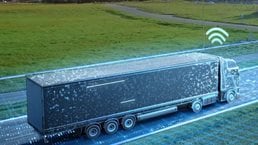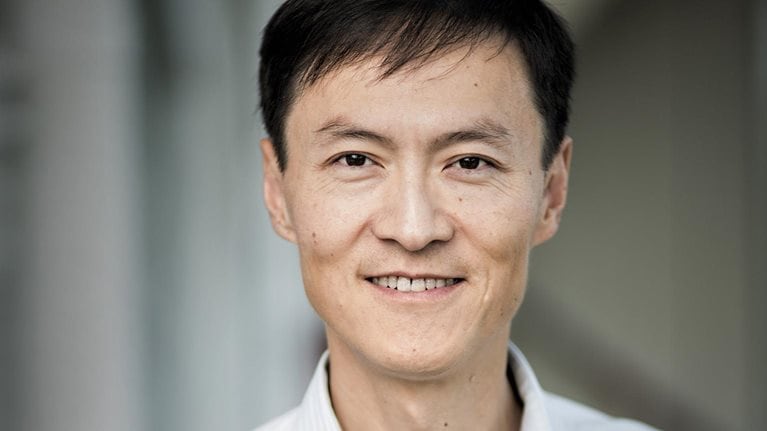When Karl Siebrecht cofounded Flexe, in 2013, the world looked quite different from how it does today. Logistics networks were rigid, e-commerce accounted for a mere 8 percent1 of total retail sales (online sales could account for more than half of all retail sales in the next two years), and fast and free e-commerce delivery was only just beginning.
In the years since, growing consumer demand, better technology, and the COVID-19 pandemic have reshaped logistics. For online shoppers, fast and free delivery has gone from a nice-to-have to a must-have service, and buy online, pick up in store (BOPIS) is now an expected convenience. Meanwhile, retailers contend with a bleak economic outlook paired with mixed signals from consumers, making demand forecasting ever more difficult.
Like many companies in the logistics space, Flexe is working to meet the new demands and challenges of the industry. Its technology platform powers e-commerce fulfillment, retail distribution, and warehouse capacity offerings to enterprise retailers and brands—without fixed, long-term leases. In July 2022, the company raised a $119 million Series D investment round at a more than $1 billion valuation. The company says that six of the top ten largest retailers and four of the five largest consumer-packaged-goods companies use its logistics programs.2
In this installment of Logistics Disruptors, Siebrecht spoke with McKinsey’s Maite Peña-Alcaraz about softening consumer demand, the need for flexible warehousing, and why ego and forecasting don’t mix.
McKinsey: What problem did you intend to solve when you cofounded Flexe?
Karl Siebrecht: One of the unique pain points we try to solve for almost every single one of our customers is how to manage uncertainty and disruptions. Fundamentally, legacy solutions are long-term investments. If you take a step back, for our customers and their supply chains, there are two fixed spots in the flow of goods.
The first is manufacturing centers. The second is warehousing. The common denominator is that they require high fixed capital and multiyear investment terms. For warehouses, there are three-year, five-year, and ten-year leases. When you make investments, your feet can be stuck in the mud if your forecast proves to be incorrect due to something outside of your control: a disruption, a change in consumer needs, a change in your competitor’s focus.
Our model turns fixed points in your supply chain into flexible points in your supply chain. Supply chain is a $1.6 trillion industry. It’s over 8 percent of GDP in the US. The biggest bottleneck along the flow of goods is the warehouse. Through a flexible warehousing solution, you can unlock bottlenecks and create new value across a huge industry.
McKinsey: Have you seen other companies also start to offer on-demand warehousing solutions?
Karl Siebrecht: The companies similar to Flexe focus on small and medium-size businesses. That’s not easy, but those customers tend to distribute through e-commerce channels only. Our enterprise customers are all omnichannel businesses. Their needs span from e-commerce fulfillment to retail brick-and-mortar store distribution to wholesale distribution. Our solutions have to map to that breadth of needs. Our solutions include distribution solutions, fulfillment solutions, and store replenishment solutions. These are very difficult to build. We have to combine deep expertise in operations and logistics with deep expertise in building scalable technology platforms.
McKinsey: It sounds like that requires a lot of intelligence about what’s happening in the market. How does Flexe enable that?
Karl Siebrecht: Our technology platform supports the business model in two dimensions. First, our customers integrate with the Flexe platform. Once integrated, they operate distribution and fulfillment centers very broadly across the network with one set of KPIs and a single view of inventory. That creates a consistent workflow and view of operational quality.
The second benefit is [a level of] data consistency that drives analytics and insights to find opportunities for speed and efficiency. A common technology platform shows how these different facilities are operated.
McKinsey: What types of services are you able to offer thanks to the technology that you have developed?
Karl Siebrecht: One example is the ability to rapidly replenish physical brick-and-mortar stores. With the rise of new solutions like BOPIS, there’s more product moving through retail stores faster, so the products need to be replenished more frequently. Adding nodes to an existing warehouse network is hugely valuable to quickly replenish goods.
With the rise of new solutions like BOPIS, there’s more product moving through retail stores faster, so the products need to be replenished more frequently.
Even before the COVID-19 pandemic, and certainly after, port capacities can run hot and cool. Without creating new port deconsolidation centers, you may miss an opportunity to flow goods through a port where there is more labor, capacity, and better costs. The ability to move your nodes around adds value throughout the entire distribution ecosystem.
For example, a very large retailer was seeing stock shortages happen at a rapid rate. They popped up 12 additional Flexe nodes to deploy the fastest-moving SKUs and replenish stores in one to two days instead of on a weekly basis.
Another example: a large home goods retailer wanted shorter delivery times for its fastest-moving e-commerce SKUs. We added Flexe nodes to the network, forward deploying the fastest-moving SKUs closer to the points of demand. Delivery times are now one to two days instead of three to seven days.

Logistics Disruptors
Meet the companies shaping how goods will move tomorrow.
McKinsey: You mentioned the pandemic. How has the pandemic affected Flexe and Flexe customers?
Karl Siebrecht: The pandemic accelerated a mindset shift that was already starting within some of the best and most sophisticated forward-thinking companies. That mindset questioned the decades-long mantra of creating supply chains that were only about efficiency.
There’s nothing wrong with efficiency, but efficiency can lead to rigidity. We had to take a step back and say, “What is the cost of this hyperefficient supply chain if it limits my ability to react quickly, to be more agile?”
Companies were already starting to explore this and think about diversifying their manufacturing base and bringing flexibility to their distribution networks. The pandemic, of course, accelerated all of that.
McKinsey: When you read the headlines today, there’s news about layoffs in the logistics industry. Amazon has been releasing warehouse space. There are international conflicts and tension. How does that affect Flexe and your customers?
Karl Siebrecht: We’ve been fortunate to help our customers through lots of disruptions before and during the pandemic—from manufacturing constraints in Asia, through distribution and freight-forwarding constraints, through customers needing more fulfillment capacity to keep up with e-commerce demand.
As we look forward, we’re seeing consumer demand soften. We’re seeing companies pull back on investments. Customers have come to us and said, “My term is coming up on a long-term lease. Looking out over the next few years, I’m not sure if we’re going to have a deep recession or a soft landing. In the face of this uncertainty, I would rather not recommit to three years, five years, or eight years of capacity.” They come to us to bridge that phase of uncertainty until they get a better sense of where the economy is going.
McKinsey: As you know, many companies, especially many shippers, are thinking about how to make their supply chains more sustainable. How can Flexe help in that journey?
Karl Siebrecht: We believe that Flexe helps sustainability in two fundamental ways. First, the core nature of our business model is to better utilize the industry’s existing infrastructure.
We don’t lease warehouses. We don’t hire people to work in warehouses. We work with a large ecosystem of partners who have existing warehouses. Our customers and business model better utilize existing assets. That is fundamentally contributing to a more sustainable footprint. The second dimension is that we enable companies to move goods closer to demand end points, shortening the last leg of distribution—transportation—which tends to be the part of the journey that is least efficient.
McKinsey: When you think about Flexe in the next five to ten years, where do you see the company going?
Karl Siebrecht: Over the next five years, we expect to continue to grow very rapidly. One of the things that’s unique about our business is that we’ve grown faster the larger we’ve gotten. It’s a testament to how much market demand there is, as well as to our value. We also expect to continue to innovate just as rapidly because as much as we’ve built over the past nine years, there’s so much more to do.
McKinsey: The talent market in logistics is particularly tight today—not only when you think about warehouse operators and drivers but really all around the value chain. How does Flexe try to acquire and retain talent to continue to support your business growth?
Karl Siebrecht: It’s a very competitive market for talent in logistics. This wasn’t necessarily the case nine years ago. But given all the problems and, frankly, all the innovation that’s been unfolding in the industry over the past several years, it’s a very tough market for talent.
The key is to build a business that’s really compelling. Our ambition is to transform the logistics industry. That attracts people of a certain mindset, people who want to join a team transforming an industry. For folks who are like-minded, it’s a pretty interesting place to come and work.
McKinsey: What keeps you up at night as the CEO of Flexe?
Karl Siebrecht: What keeps me up at night more than anything else is figuring out how to maintain a great culture in our team and high standards of execution while we are growing and scaling so quickly. It’s very hard to do. It is also one of the most fun parts of the job, to help build a great team and help people develop.
There is no shortage of new opportunities inside our company or new problems to solve. And that creates a great environment for people who are growing their careers. The best people want to take on new challenges. We’ve got a challenge-rich environment.
McKinsey: Looking back, what advice would you have for a new entrepreneur starting a business in logistics?
Karl Siebrecht: Make sure you take the time to understand what you’re getting into, how hard it actually is to build a business. Ben Horowitz from Andreessen Horowitz has a great book that he’s written called The Hard Thing About Hard Things.3 Read that, talk to other entrepreneurs, understand what you’re getting into.
After you’ve done your diligence, if what you conclude is that [the difficulty building a business] is exactly what’s most exciting about starting a business—that challenge and knowing how hard it’s going to be—then do it.
McKinsey: If you had a magic wand and could change one thing about the industry, what would you change?
Karl Siebrecht: If I had a magic wand to solve a problem, it would be this: to encourage people to spend as much time thinking about where there might be errors in forecasts as they spend trying to get the forecast right.
Once you realize that your forecast may not be perfect, only then can you start to build a plan to address the range of errors in outcomes relative to what your forecast says. There’s a degree of humility that’s required. Check your ego at the door.
Forecasting next month is challenging. Forecasting the year is more challenging. Forecasting three years out? Five years out? The reality is, there’s massive amounts of uncertainty there. And if you’re building a plan based on your forecast being right, you’re building the wrong plan.
If you’re investing in infrastructure and betting that your forecast is right, it’s the wrong infrastructure. But if you can take a step back and really put time into, “How much error, plus or minus, is in here,” and then, “What am I going to do about it,” it opens up your mind to a broader set of solutions and a broader set of investments in infrastructure.
And that’s how leading brands and retailers are beginning to solve logistics problems: by incorporating the reality that the world is uncertain, the world can be messy. Once we admit and understand that, we’re set up to build much more effective solutions.

